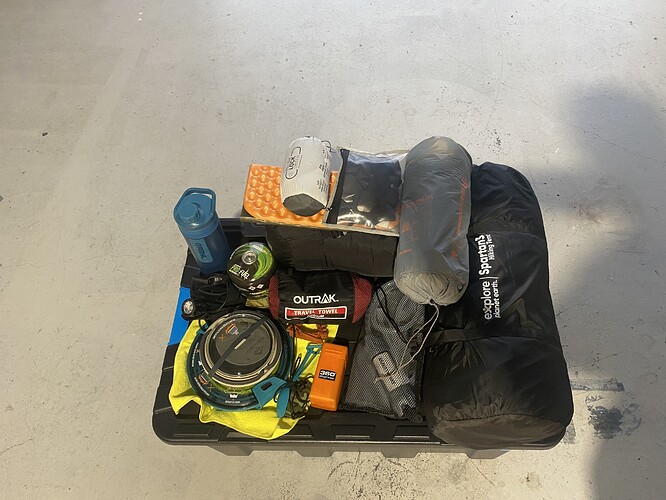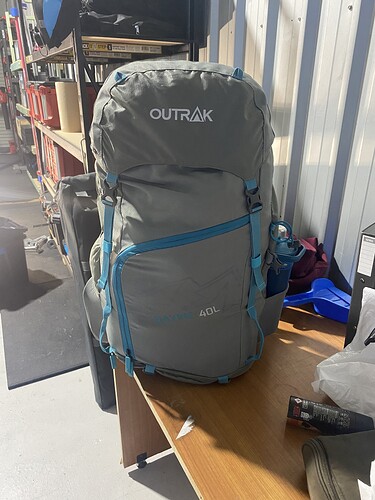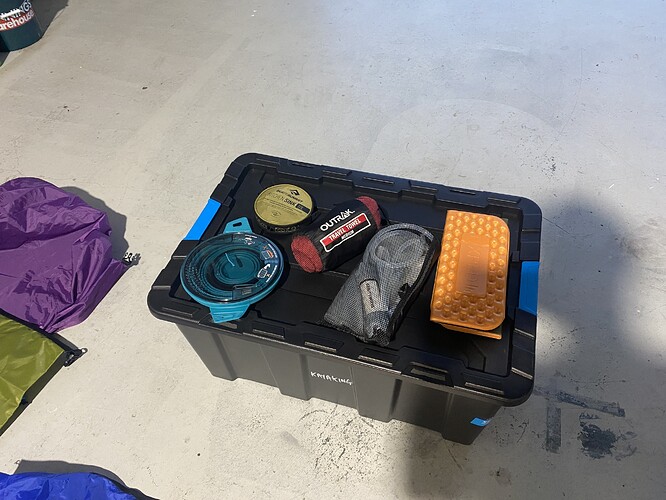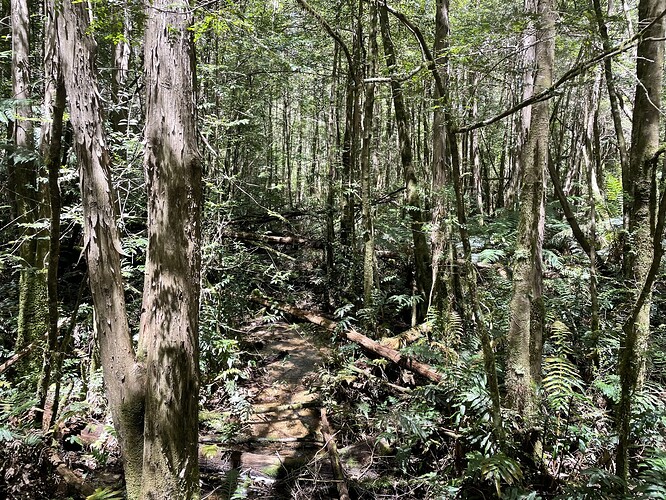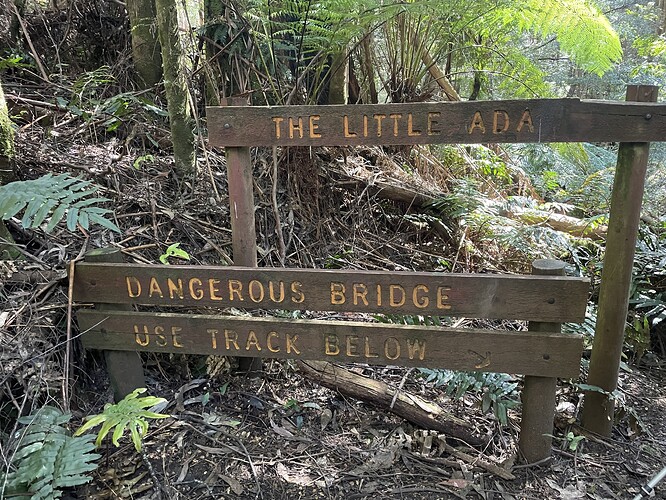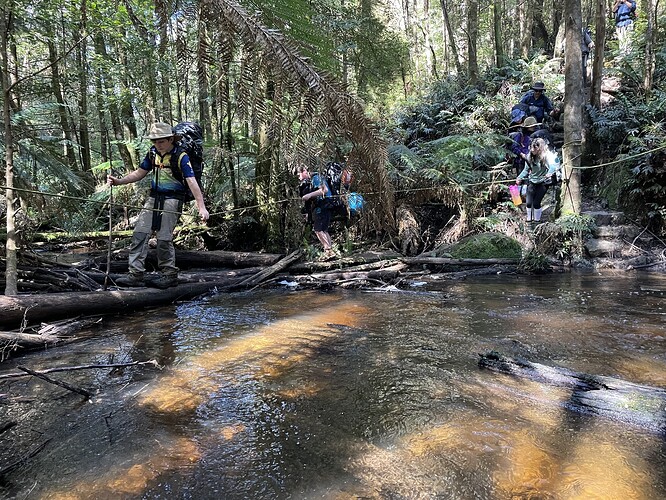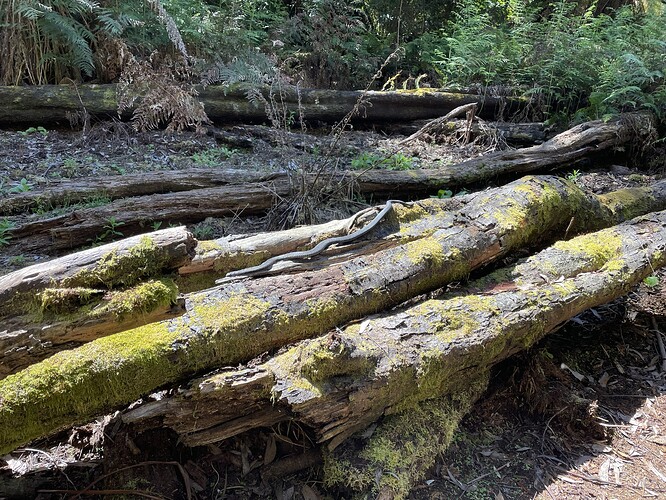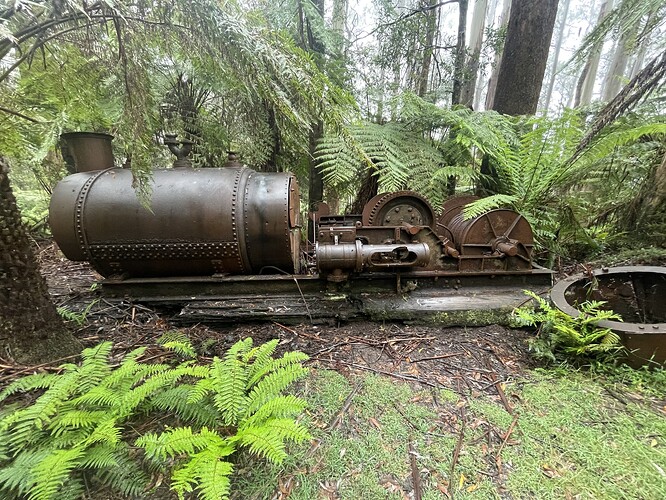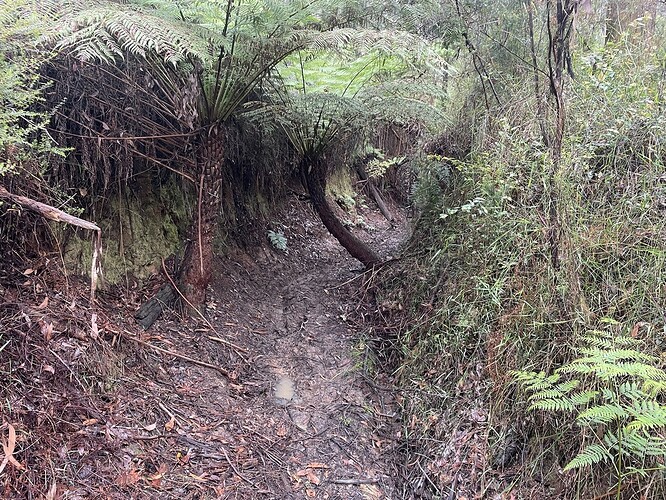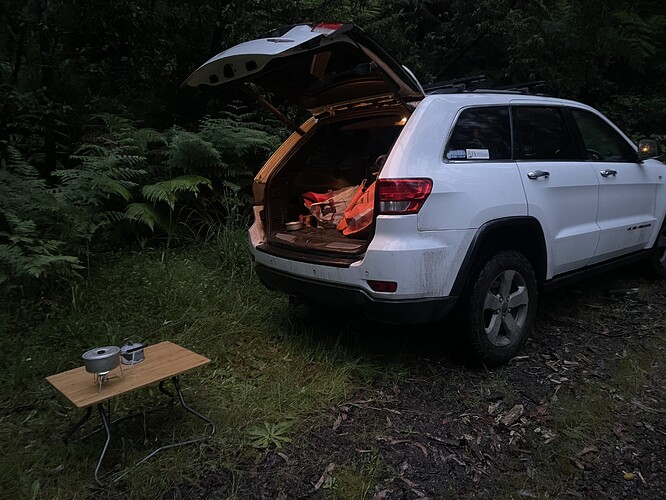Did a bit of a dummy pack for an overnight hike.
Definitely need to upgrade the tent & sleeping bag as combined they eat up about 30L of my 40L pack (which in fairness I didn’t actually buy specifically for hiking). Last photo is what I ended up leaving out.
Some quick googling tells me a decent 1P tent will be about the same size as my sleeping mat (the grey bag) and a lightweight bag/quilt a fraction bigger. Should leave enough room for food!
Looks like you have everything packed but the kitchen sink!
I have one of those sinks, and never use it. In practice it is easier to wash inside the cooking pot in my experience.
I spent the last couple of weekends doing some walks on the Walk Into History track at the back of Warburton/ Powelltown. Great weather the weekend before, this weekend not so much.
A couple of danger noodles spotted, and many many leeches.
Yeah I just give abit of a wash out, with a drop of detergent, and cut a scrubbing sponge in half.
As i said a few months ago, i trialled dehydrating all my meals on my last hike…… putting a meal into a small thermos with hot water, and rehydrating for an hour while hiking.
It was a game changer for me. I didn’t cook a thing. No dishes. I just washed out my thermos, that’s it.
Dehydrated a heap of rice & pasta. Then dehydrated home made pasta sauces, stews, chilli con carne, baked beans & hummus.
All you need to do is, put a handful of dehydrated rice/pasta into a thermos, add a handful of dehydrated sauce/chilli, and hot water. Then let it sit.
My new goto breakfast is half a cup of rolled oats and half a sachet of coconut milk powder. Rehydrate overnight, add a dash more hot water in the morning to warm it.
Super creamy and dairy free, and no work to prepare in the AM.
Thinking of adding a few sultanas to the mix too, will make it a bit burcher meusli like I think.
Yep.
Cook meal, leave water in the pot while eating, heat if req to help break up everything, wipe out later.
A lot more convenient when you’ve only got 1-2 dishes.
Think I’d be more likely to use the sink to bath out of than wash dishes in.
Did you make it in as far as Ada tree?
Consider going in every time I drive past but it’s a fairly large detour in what is normally a 4(ish) hour drive home if I go that way.
If you make it out further Tooroongas(sp?) Falls is a nice short hike (can’t remember if there’s options for a longer one there or not) and has spots for car camping.
Are rice and (not fresh) pasta really that wet for this to be worthwhile?
Yep. Weekend 1 was Starlings Gap to Ada Tree, with overnight at Ada Mill.
Weekend 2 was supporting a walk from High Lead to Big Pats Creek, so I did some side walks including part of Richards Tramway (the curves).
Cook it then dehydrate I assume, to make it “instant”.
@megahertz what’s the coldest you’ve taken your Moondance to? (Iirc you said it was 3 season)?
I assume it would handle most Australian conditions unless it’s July on the top of Kosciuszko?
Currently it’s what I’m leaning towards as a 1P tent (I like the idea of bug net + tarp but don’t rate my erecting skills and I’d imagine the conditions need to be just right for it to not be horrible).
So you cook the Rice and Pasta (separately obviously) then put it in the dehydrator.
I haven’t tried the rehydrate method with uncooked pasta/rice. But I would assume that it would end up being half cooked.
The best part of dehydrating cooked rice/pasta, is that it’s already cooked…. And just needs to re-hydrate. So it’s heaps quicker to be ready to eat.
To be honest, I would be OK in it 4 seasons, including light snow if camping below the treeline.
It would be a bit cramped for snow camping when trying to cook inside the vestibule.
Act fast and get a Mont Krypton for snow camping - reduced to $500 from $1250! Krypton Tent Lemongrass - Mont Adventure Equipment
Act fast and get a Mont Krypton for snow camping - reduced to $500 from $1250! Krypton Tent Lemongrass - Mont Adventure Equipment
My goto dehydrated meal is lentil dahl curry. Tip : dehydrate in the garage to avoid the entire house smelling like an Indian restaurant.
Pumpkin soup goes well in the dehydrator as well.
Given I’ve only ever really done same day hikes in the middle of summer (where I’ve essentially just worn gym clothes) been doing a bit of reading into layering and NGL has confused the ■■■■ out of me (not helped because I’ve been looking at kayaking layering at the same time and that has some discernible differences).
Winter seems kinda straight forward, but is there anything in particular you’d do differently in summer ie ditch thermal layer, diff material for base layer etc etc
Top:
| Base Layer | Mid-layer | Thermal Layer | Outer Layer | Headwear | |
|---|---|---|---|---|---|
| -10*C | |||||
| 0*C | Merino or synthetic | Fleece | Down or synthetic | Wind/waterproof jacket | Wool(?) beanie +/- buff |
| 10*C | |||||
| 20*C | |||||
| 30*C |
Bottom:
| Base Layer | Mid-layer | Thermal Layer | Outer Layer | Socks | |
|---|---|---|---|---|---|
| -10*C | |||||
| 0*C | Merino or synthetic | Fleece | ??? | Wind/waterproof pants | Wool(?) |
| 10*C | |||||
| 20*C | |||||
| 30*C |
You might be overthinking it. If your trip is going to be hot during the day, then you only need to worry about how you will keep warm at night and maybe a fleece or light down jacket would cover that. If you are expecting rain then a light rain jacket, longer rather than shorter and I wouldn’t take rain pants in summer as I would be wearing shorts and your legs dry out ok, but YMMV.
You might be overthinking it.
Quite possibly haha.
Think I’ve just been thrown by articles insinuating you should be wearing wool even in summer, when I had just planned on getting the lightest/most breathable shorts + shirt (long sleeve + collar) I could find.
Not all summers are equal though. I had a vile time at Cradle mountain in the middle of January a few years back. Gorgeous country, but it hailed sideways for hours. I had a couple of light layers over thermals, but i still damn near froze.
This is why I was trying to calculate based on temp (+/- wind/rain) rather than season.
